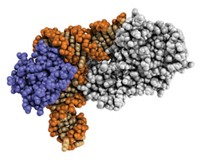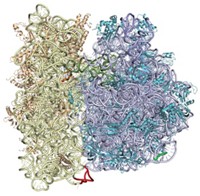Advertisement
Grab your lab coat. Let's get started
Welcome!
Welcome!
Create an account below to get 6 C&EN articles per month, receive newsletters and more - all free.
It seems this is your first time logging in online. Please enter the following information to continue.
As an ACS member you automatically get access to this site. All we need is few more details to create your reading experience.
Not you? Sign in with a different account.
Not you? Sign in with a different account.
ERROR 1
ERROR 1
ERROR 2
ERROR 2
ERROR 2
ERROR 2
ERROR 2
Password and Confirm password must match.
If you have an ACS member number, please enter it here so we can link this account to your membership. (optional)
ERROR 2
ACS values your privacy. By submitting your information, you are gaining access to C&EN and subscribing to our weekly newsletter. We use the information you provide to make your reading experience better, and we will never sell your data to third party members.
Biological Chemistry
Origin-Of-Life Implications For Synthetic RNA …
Scientists develop RNAs that synthesize new RNAs or can assemble a new RNA enzyme, a step short of RNA self-replication
by Carmen Drahl
April 11, 2011
| A version of this story appeared in
Volume 89, Issue 15
Motivated by the idea that RNA may have been life’s first chemical machinery, scientists have developed RNA molecules that can synthesize new RNAs up to about 95 nucleotides in length or that can assemble a new RNA that is itself an active enzyme (Science, DOI: 10.1126/science.1200752). The earliest denizens of a primitive “RNA world” might have been RNA molecules with the ability to self-replicate. In their hunt for such molecules, Philipp Holliger and colleagues at the Medical Research Council Laboratory of Molecular Biology, in Cambridge, England, used a previously engineered RNA called R18 as a starting point. Until now, R18 was only capable of assembling RNAs about 20 nucleotides long, but the Cambridge team’s screen, which selects for RNAs that can string many nucleotides together, helped them design improved RNA enzymes. These next-generation RNAs can’t make copies of themselves, and their yields of long RNAs are limited. Still, the work “is very exciting,” says Ronald R. Breaker, who studies RNA function at Yale University. “The authors have pushed an RNA to the brink of self-replication—just a bit farther and no more nudges will be needed.”




Join the conversation
Contact the reporter
Submit a Letter to the Editor for publication
Engage with us on Twitter